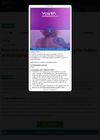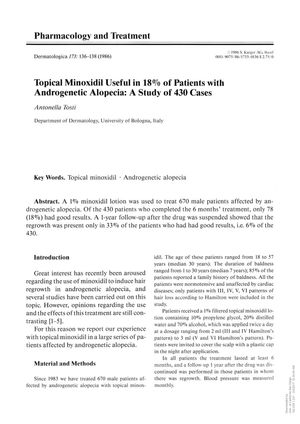TLDR Using minoxidil lotion for hair regrowth in androgenetic alopecia has limited success and should be evaluated carefully.
This text is a study published in 1986 by Antonella Tosti of the Department of Dermatology at the University of Bologna, Italy. The study looks into the effects of topical minoxidil to induce hair regrowth in androgenetic alopecia. After treating 430 patients with 1% minoxidil lotion twice daily for 6 months, only 18% had good results and 33% of those maintained their regrowth after treatment was discontinued. It was concluded that this treatment should be carefully evaluated given its cost and unknown long-term risks due to the small percentage of satisfactory results it can achieve.
 15 citations
,
May 2017 in “Journal of Dermatological Treatment”
15 citations
,
May 2017 in “Journal of Dermatological Treatment” Latanoprost works better for hair growth, and combining it with betamethasone valerate is most effective.
4 citations
,
December 2015 in “MVP journal of medical science” Topical Minoxidil 5% works as well as the combination treatment for hair loss.
1 citations
,
September 2015 in “MVP journal of medical science” Topical Minoxidil 5% is as effective as the combination treatment for hair loss.
August 2014 in “Journal of drug discovery and therapeutics” Topical minoxidil and oral finasteride can help regrow hair in androgenetic alopecia.
 March 2005 in “Journal of The American Academy of Dermatology”
March 2005 in “Journal of The American Academy of Dermatology” Two cosmetic lotions improved hair growth and had better cosmetic effects than 2% minoxidil.
 1 citations
,
January 1997 in “Archives of Dermatology”
1 citations
,
January 1997 in “Archives of Dermatology” Hair loss from alopecia areata can sometimes regrow in a pattern similar to androgenetic alopecia.
24 citations
,
November 1992 in “Archives of Dermatology” Prednisone can regrow hair in alopecia areata, and minoxidil helps maintain it.
4 citations
,
March 1988 in “PubMed”



